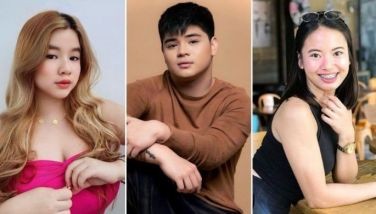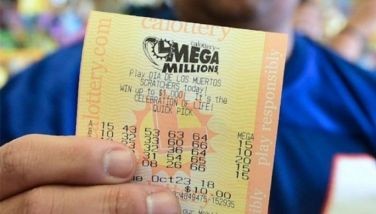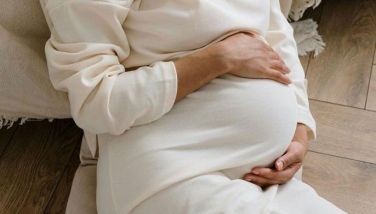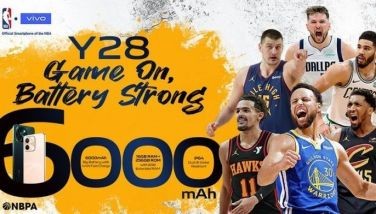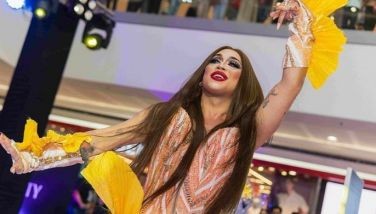Our bets to win in Paris
October 26, 2005 | 12:00am
 It’s my third time to witness the Philippine Fashion Design Competition (PFDC), also known in the local fashion community as the "Paris Competition."
It’s my third time to witness the Philippine Fashion Design Competition (PFDC), also known in the local fashion community as the "Paris Competition."
It’s only the most important fashion design competition you can join here because the winners are flown to Paris to participate in the Concours International des Jeunes Créateurs de Mode (International Competition of Young Fashion Designers), where the grand prize is a one-year scholarship to the Chambre Syndicale de la Haute Couture, an air ticket to Paris, and 3000 euros. The first two times I came as a guest. Usually, when I pick out winners (just like I’m watching a beauty contest on TV), they never make it. I guess my taste differs from the judges (as it does from most of the human race). This time I was invited as a member of the press. I witnessed the pre-judging at the Intercon hotel’s Le Boulevardier, where the entries interpreted the theme "Baro’t Saya and Letras y Figuras."
It was a very casual afternoon with the organizers (mostly fashion designers) and judges like Irene Marcos Araneta, Margarita Fores, Ed Calma, Fe Reyes, Lizzie Zobel, Bea Valdes, Celine Lopez, Rhoda Campos, Jul Dizon, Lulu Tan Gan, Cesar Gaupo, Roy Gonzales, Francois Blam, and Melanie Cuevas.
Merienda was served buffet-style. Judges walked around with their score sheets and pens, talked to each other, compared notes.
I thought I would walk into a room full of models wearing the creations, but this time there were no models, only mannequins. It reminded me of exhibits I used to see at FIT New York. I saw the entries up close and chose the ones I liked, thinking of course that they wouldn’t win.
My top three: Norman Noriega’s Starry, Starry Nights, a 1920s flapper-inspired dress made of chains, hooks, ball chains, fasteners and other kinds of metal. (Celine Lopez seemed to like it, too.) Two things come to mind: I wonder how much it weighs and if the model felt cold wearing it.
I thought Jerome Ang’s Radiolarians had a nice futuristic silhouette that reminded me of the movie Titanic. It’s a two-piece sculptural top and skirt made of quilted piña silk with abaca fiber, suede, quilted appliquéd fabrics, burnt straw, rattan buttons, metal chains, Swarovski crystals, and molded clay sculptures.
Ernesto Angeles’s Tapistry stood out because of its interesting shape and texture. It’s a two-piece ensemble of cropped jacket with bag sleeves and a sheath dress made of piña strips and organza.
The following looked interesting on a form, but not as good when worn by a live model: Jared Cloyde Servaño’s Kagat sa T’nakal, made of T’nalak cloth, covered buttons, dumdum beads (love that term) and horse hair. Eric de los Santos’ Kataw (Mermaid), made of hablon, capiz shell buttons, pearls and crystal beads. Emi Alexander Englis’ Quo Vadis, a "reworked" two-piece gown and robe.
Vic Josmar Floreca’s Pinta was made of ikat, canvas, stretch tulle and coconut beads. Once on the live model, it looked odd and unfinished with a naked crotch.
That night, the winners were announced at an event in Glorietta. It’s a miracle only one of my choices didn’t make it.
Grand Prize winner for apparel was Ernesto Angeles, while the top nine finalists were: Norman Noriega, Vic Josmar Floresca, Jerome Ang, Finina Marie Tugade, Lory Mer Villareal, Roberto Angelo Estera, Emi Alexander Englis, Eric De los Santos, and Mark Gilbert Marpuri.
It reminded me of one of my favorite paintings, Pieter Bruegel’s The Blind Leading Leading the Blind.
Yvonne made use of piña silk, leather, glass beads and crystal to create "a headpiece that’s also a bag with two compartments." She describes the unconventional piece as "organic in shape, almost like a cocoon."
Looking at it, architect Ed Calma questioned its practicality. Wouldn’t the bags weigh down the wearer’s head?
I later asked Yvonne if she had actually tried putting stuff in the bags. She said she only placed a compact inside the bag compartment. It was suggested that she amend her design before it goes to Paris. She’s thinking of using a lighter fiberglass or a woven material, such as those used for making native hats.
It’s her second time to succeed in the PFDC, having previously won in the apparel division in 2001.
Though she doesn’t consider herself a "bag lady," Yvonne is known for making unconventional bags that are inspired by organic parasites and the films of David Cronenberg.
A multi-media artist, Yvonne dabbles in interior, furniture and fashion design, film, sculpture, painting, even songwriting. She is currently preparing for her solo show on November 17.
In addition to her victory this year, Yvonne also received Metro Magazine’s Best Accessory Design award, while other special awards were given to Alodia Cecilia Sales for Anaconda (Canon IXUS Style Award for Accessories); Roberto Estera for Ang Saranggola ni Pepe (Canon IXUS Vibrant Style Award for Apparel); and Norman Noriega for Starry, Starry Nights (Metro Magazine’s Best in Apparel Design.)
Completing the line-up representing the Accessories Division are Mary Felylou Miller, Mark Anthony Tenchavez, Danilo Macote and Chris Diaz.
BrandSpace Articles
<
>








